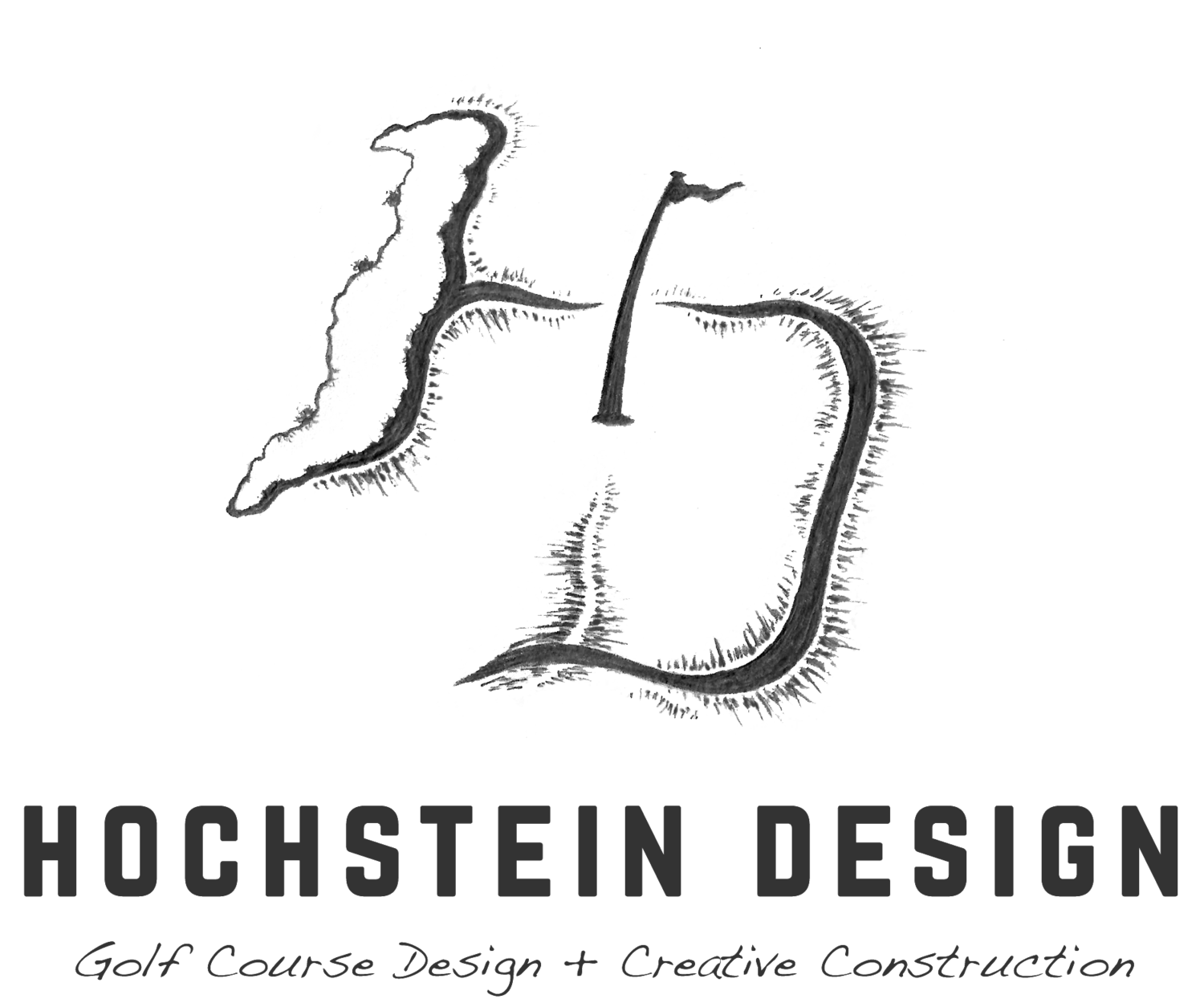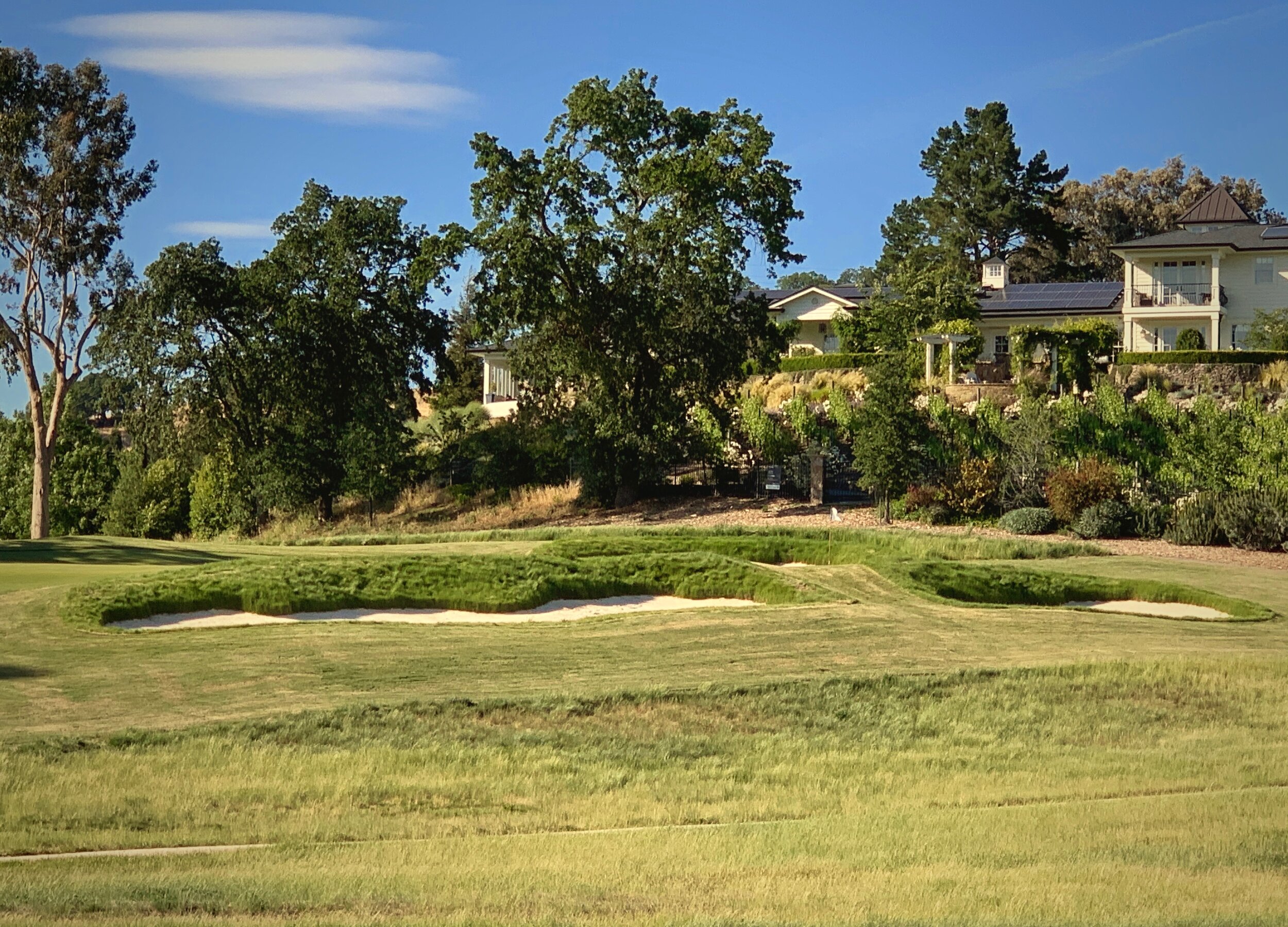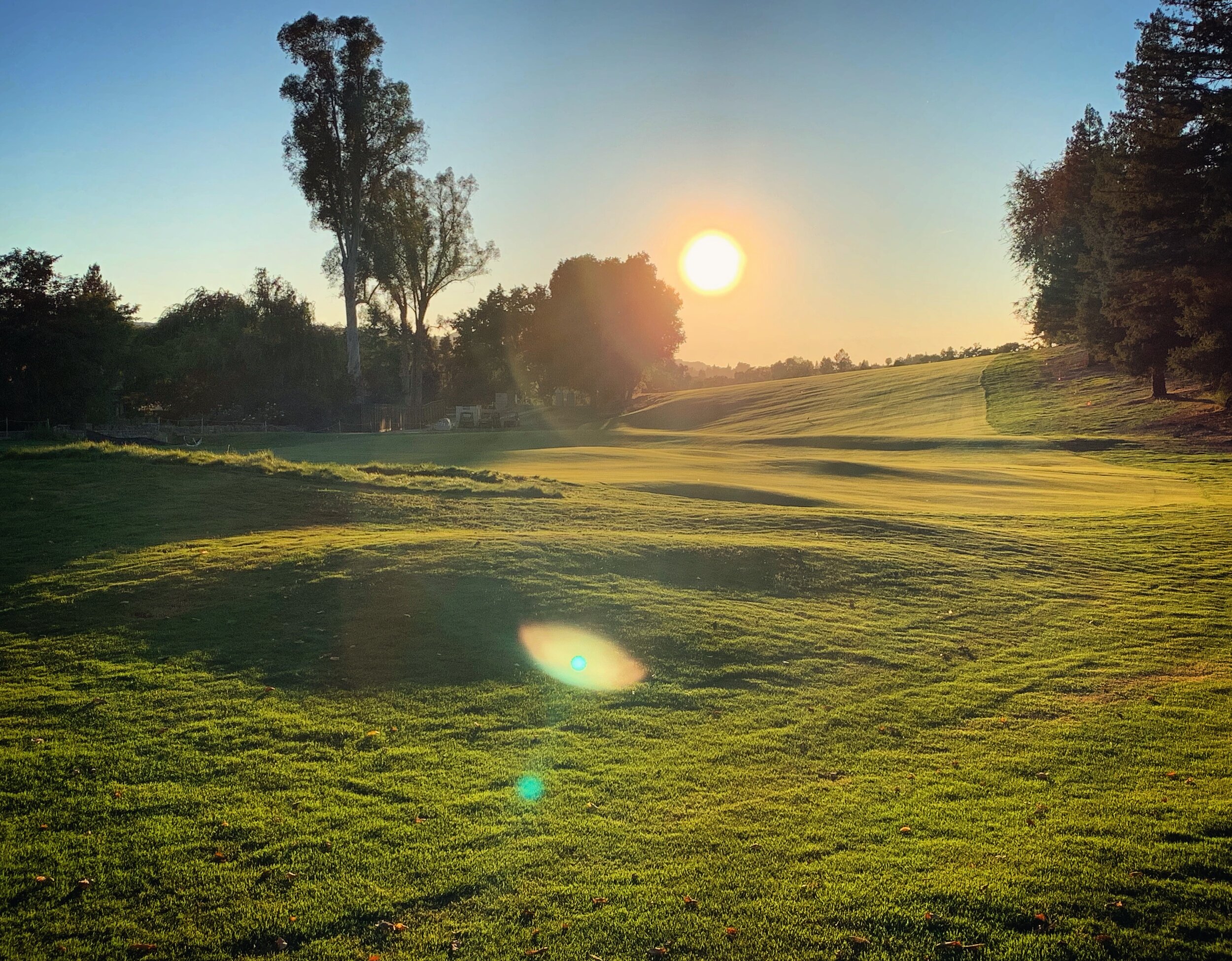Diablo Country Club - Diablo, CA (Jack Neville 1914, William Watson re-design 1920; Renovation by Origins Golf Design (Todd Eckenrode), 2019)
Diablo Country Club was a particularly exciting project for us. Not only was it a short 20 minute commute from our home, it is also the only known property where both Jack Neville (original architect of Pebble Beach) and William Watson worked. Diablo was originally laid out as a nine hole course by Neville in 1914 but was later expanded to a full 18 by Watson. The property is beautifully pastoral at the base of Mount Diablo, and the club itself is rich in history.
The project, led by SoCal-based architect Todd Eckenrode, was a significant one with complete re-grassing of the whole property, a new irrigation system, re-shaped greens (of various impact/significance), re-shaped and shifted bunkers, the restoration/addition of natural creek ways, and the addition of lower maintenance “native” areas. It was driven not just by a desire to improve the playing interest of the course and restore it to its historic pedigree, it was also implemented to sensibly move forward into the future by switching to much more environmentally/drought-friendly turf grasses that should result in a significant reduction of water use and other inputs. That is an important move to make in a state where water gets more precious and expensive every year.
Hole 11 at Diablo with its vistas both long and short
Hole 16, a cool par 3 on the infield of the old horse track with some of the most interesting greens contours and visually impactful bunkering paying tribute to historic cross bunkers that once fronted this green.
Hole 18 from the right fairway bunker
Hole 2 green, my favorite on the course for the way it falls away and to the right. The move was to get the green out to the edge of the dry creek, but with all the layers of construction this was much more complicated to execute than one would think. Careful shaping was needed at the start, and hand work was required to get the details right in the very end. Hole 3 is to the right in the near distance, and hole 4 left in the far distance.
Hole 15 green, which was maybe the flattest and simplest on the course when we began. It only took a few design moves though to make it interesting while maintaining its elegant low profile. The left bunkers got pushed back, the green opened up in their place, and contours added in front to add interest/challenge to the approach and recovery shots. A back right pin was also added, and the right bunker extended forward to accentuate the angle of play on the hole. Simple moves resulting in a big amount of variety.
Hole 8, the shortest on the course, as viewed from 7 fairway
Carefully shaped microcontours on hole 15
Bunker layers on hole 16








